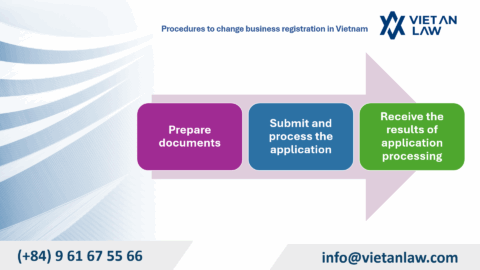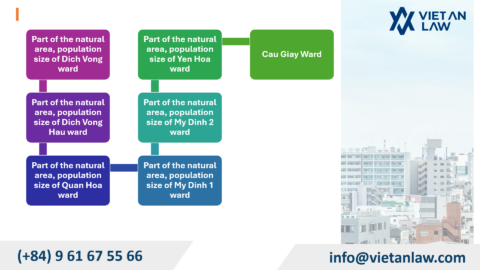On June 30, 2024, the Government issued Decree No. 72/2024/ND-CP stipulating the VAT reduction policy according to Resolution No. 142/2024/QH15 dated June 29, 2024 of the National Assembly. Accordingly, the regulation reduces value-added tax (VAT) to 8% in 2024 from July 1, 2024 to December 31, 2024. Below, Viet An Law will analyze some notable contents of this VAT reduction policy.
Table of contents
Value added tax is a tax calculated on the added value of goods and services arising in the process from production, circulation to consumption. Subjects subject to value added tax are goods and services used for production, business and consumption in Vietnam, except for the subjects specified in Article 5 of the Law on Value Added Tax 2008, amended and supplemented in 2013 and 2016. The tax rate according to Article 8 of this Law depends on each good and service, including 0%, 5%, 10%.
After being affected by the Covid-19 pandemic, at the 5th Session in 2023, the National Assembly approved a policy of reducing 2% VAT for some items currently subject to a 10% tax rate to act as a lever to restore the economy. The reduction of VAT has brought many benefits but the economic recovery is not yet stable. Therefore, the Government proposed to continue reducing VAT in 2024.
In the current context, domestic demand is very low, reducing VAT reduces goods and services, especially essential goods and services, contributing to increasing aggregate demand, stimulating consumption, increasing sales, and supporting economic growth. This policy helps control inflation and maintain interest rates to support businesses.
The Ministry of Finance said that the development of Resolution 142/2024/QH15 of the National Assembly and Decree 72/2024/ND-CP of the Government on reducing value added tax by 2% aims to stimulate consumption, in line with the current economic context, thereby promoting production and business activities to recover and develop soon to contribute back to the state budget, as well as the economy to implement the 5-year socio-economic development plan 2021 – 2025, the annual socio-economic development plan, the economic restructuring plan for the period 2021 – 2025.
According to the provisions of Clause 1, Article 1 of Decree No. 72/2024/ND-CP, from July 1, 2024 to December 31, 2024, value added tax will be reduced for groups of goods and services currently applying a tax rate of 10%, except for the following groups of goods and services:
Note:
According to Clause 2, Article 1 of Decree 72/2024/ND-CP, for the above groups of goods and services with reduced value added tax, business establishments calculating value added tax according to the deduction method are allowed to apply a value added tax rate of 8% to goods and services with reduced value added tax.
Thus, the group of services and goods currently subject to a VAT rate of 10% will be reduced by 2% to 8%. The roadmap for applying the 2% VAT reduction is from July 1, 2024 to December 31, 2024.
At the same time, business establishments (including business households and individual businesses) that calculate value added tax according to the percentage method on revenue will have the percentage rate reduced by 20% to calculate value added tax when issuing invoices for goods and services that are eligible for reduced value added tax.
When creating a value-added invoice for providing goods and services subject to value-added tax reduction, it is necessary to note the following procedures:
In case a business establishment calculates value added tax according to the percentage method on revenue when selling goods or providing services, the sales invoice must clearly state the amount of the discount.
In case the business establishment has issued an invoice and declared according to the tax rate or percentage to calculate value added tax that has not been reduced according to the provisions of Decree 72/2024/ND-CP, the seller and the buyer shall handle the issued invoice according to the provisions of the law on invoices and documents.
Based on the invoice after processing, the seller declares and adjusts the output tax, and the buyer declares and adjusts the input tax (if any).
According to the report of the National Assembly’s Supervisory Delegation on the implementation of Resolution No. 43, assessing the results of the implementation of the tax exemption and reduction policy, the report of the National Assembly’s Supervisory Delegation showed that the policy of reducing 2% VAT rate for groups of goods and services currently applying a tax rate of 10% (except for some groups of goods and services that have been specifically regulated) has achieved positive results.
The expected VAT reduction when developing the program is 49,400 billion VND. The actual amount is 44,458 billion VND, of which the reduction in the State budget revenue in 2022 is 41,498 billion VND, and the reduction in the State budget revenue in January 2023 is 2,960 billion VND, equal to 90% of the expected amount.
Reducing VAT by 2% will help people save on spending and living expenses, creating a psychological impact, helping to stimulate demand and increase consumption. Applying the policy of reducing VAT by 2% for the last 6 months of 2024 is expected to reduce revenue by about 24,000 billion VND (about 4,000 billion VND/month, of which the reduction in domestic revenue is expected to be 2.5 trillion VND/month and the reduction in import revenue is about 1.5 trillion VND/month).
Above is the analysis of Viet An Law on reduce Value Added Tax (VAT) to 8% in Vietnam 2024. If you have any related questions on tax issue in Vietnam, please contact Viet An Law for the best support.



